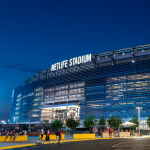
Stadiums never built in Italy
Some of the first promised and then unfulfilled revolutions that could have changed Italian football
February 27th, 2022
They have been pompously announced with dedicated press conferences along with futuristic renderings by internationally renowned architects, but very often all the big words spent have remained such and never turned into concrete facts. When we talk about stadiums in Italy, on the one hand there is the sacredness of the place of worship, a sacred place full of happy and unhappy memories, where every Sunday people gather on the steps to support their colours. But on the other hand there is also a bit of embarrassment, most of the Italian stadiums are dilapidated, in disastrous conditions and with the athletics track that separates the field. Italy's last big chance to get a makeover was the 1990 World Cup, and from then on they slowly fell into an oblivion from which only a few lucky clubs managed to re-emerge.
Udinese and Juventus are two of the virtuous clubs that have turned their words into deeds, delivering a new modern stadium to the city with excellent results. And the clubs' coffers have also benefited: not having to share part of the takings with anyone else has allowed the clubs to speed up their growth, becoming ever stronger financially. The pandemic has obviously slowed down this process, since in recent years the stands have remained empty or with reduced capacity, but despite everything, at least in Italy (given the ease with which large structures are built outside our borders) bureaucracy has done the rest. Most of the projects have been stalled due to exemptions, permits and laws that are sometimes too stringent and backward, which have not allowed many teams to build the necessary facilities.
As Roma - Colosseum
Roma's stadium is perhaps one of the most famous stadiums ever built, strongly desired by former president Pallotta, who wanted to create a new football coliseum, but even today, with a different ownership, the Giallorossi have failed to lay the first stone. The project has fallen into oblivion, a perfect illustration of the stalemate in Italy when the word stadium is mentioned. Now even the new club is testing the ground for other possible solutions, but there do not seem to be great outlets, but for a club of the caliber and coat of arms of Roma the stadium would be a turning point, aligning itself with all the other great (football) powers in Europe and beyond.
Calcio Catania - Dome Arena
When the team was playing in Serie A, they had recently completed the Torre del Grifo sports centre and were just a few points away from the Europa League, with illustrious coaches such as Siniša Mihajlović, Diego Simeone and Vincenzo Montella. Surprisingly, the then president Nino Pulvirenti started handing out strange flyers at a press conference depicting a new 30,000-stadium stadium modelled on Swansea's. For those present it was more than a surprise, as they were supposed to be there for a regular press conference but instead found themselves at an unannounced presentation of the new stadium. The project never saw the light of day because of the problems that would soon overwhelm the Etna club, dragged into a real hell by the same president who dreamed of the stadium and a future in Europe.
Fiorentina - The lily
The Artemio Franchi is still a hot, hot topic, but don't tell that to Rocco Commisso. In theory, on March 7, new plans for a restyling of the Florentine stadium should arrive on the table of the municipality of Florence, not many appreciated by the exuberant American president who believes that the best solution is to privatise everything and build a new and independent lily stadium. Unfortunately for him, he had to deal with the Italian bureaucracy that blocked every work and rejected every solution, making the new stadium impossible. We'll see what happens next, but Commisso still doesn't seem very keen on getting it all done.
Empoli - The new Castellani
The new Castellani was supposed to represent all the desire and strength of a society that every year invests in young people and always aims to do better whether in Serie A or B. Yet here the time passed in vain and has worn out all the desire and enthusiasm of the president Corsi to renew the Castellani adapting it to the great English stadiums. A lot of time has passed, so much so that a few months ago the president of the Azzurri returned to the subject saying once again bitter and disappointed for the non-completion of the stadium that would allow Empoli to grow more than it has done in recent years.
Siena - The new era of Robur
Siena's stadium is perhaps one of the most futuristic in Europe, a true amphitheatre able to camouflage itself among nature and able to accommodate 21,000 people. The stadium, in addition to living 7 days a week, had to be one of the most sustainable ever seen, because in addition to being powered only by renewable sources, only recycled materials were used for its construction. It's a pity it never came to fruition, as it could have undoubtedly become one of the most beautiful stadiums on the Italian scene, capable of blending past and future in a single infrastructure.































